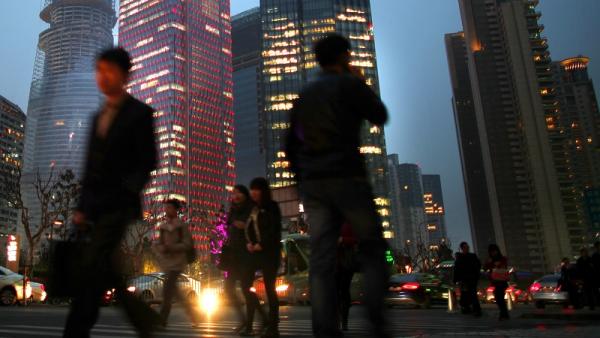Why China fears are overblown

James Laurenceson, Deputy Director, Australia-China Relations Institute, University of Technology Sydney |
This article originally appeared in the Business Spectator, January 15 2016.
The capacity of Australia’s financial markets to see ghosts lurking in China’s economy has reached new heights.
Analysts explain that the main reason $100 billion has been wiped from the value of local shares since the beginning of the year is that China is depreciating its currency, the renminbi (RMB), faster than expected.
And that must mean Chinese authorities are more worried about a growth slowdown than they have admitted.
This conclusion might be plausible were in not for some basic facts.
For a start, consider that China’s currency hasn’t actually depreciated.
Ask Chinese tourists.
They won’t be hard to find. Over the past 12 months more than one million have visited Australia, up 22 per cent from a year earlier.
Or put the same question to Chinese students. The number enrolled at Australian schools and universities jumped 13 per cent last year.
According to data from the Reserve Bank of Australia, since the end of 2014 China’s currency has appreciated nearly 9 per cent against the Australian dollar.
Don’t think that this is just a quirky local currency story.
China’s biggest export customer is the EU. Over the same period the renminbi has appreciated 4 per cent against the euro, and 8 per cent against the Japanese yen.
Far from Beijing stealthily trying to rescue its domestic economy through a beggar-thy-neighbour export push, it’s trade-exposed industries in Australia, Europe and Japan that have felt a boost.
There’s really only one major currency that the renminbi has weakened against and that’s the US dollar.
And therein lays the source of the confusion.
For decades China set its exchange rate with specific reference to the US dollar. But that approach was ditched last year in a bid to make the RMB more responsive to demand and supply conditions.
What China’s central bank said in December was that they expected the RMB would remain “basically stable” in 2016 against a basket of currencies.
So far this year the China Foreign Exchange Trade System RMB index, which includes a 6 per cent weighting for the Australian dollar, has depreciated by less than one per cent.
Compared with the end of 2014, it has depreciated just 0.04 per cent.
With the US increasing interest rates it’s likely that market forces will see the US dollar continue to strengthen against the renminbi and all other major currencies in the year ahead.
What does this mean for Australian investors?
To gauge the health of China’s economy, don’t get too hung up on the bilateral US dollar exchange rate.
There are plenty of other, more informative indicators, even if official GDP data are believed to be overstated.
Retails sales expanded by 10.6 per cent in November. Online sales were up 34.5 per cent. Express parcel deliveries jumped 48.1 per cent, while air passenger traffic rose 11.2 per cent.
These are the markers of China’s new economy, where consumption accounts for 60 per cent of growth.
The outlook for consumption also remains positive. Last week the Westpac-MNI China Consumer Sentiment Survey reported confidence being up in December compared with November. The current reading is now higher than it was a year ago.
None of this is to say that China’s economy won’t face headwinds. There is ongoing weakness in the old growth engines of fixed asset investment and exports.
But last week the World Bank announced it was still expecting growth of 6.7 per cent growth for China this year. This forecast got relatively little attention amid the palpitations about the stock market.
Put differently, this means that around 50 per cent more purchasing power will be added to China’s economy in 2016 than in 2010.
If that’s what financial markets consider a Chinese hard landing, Australia’s real economy can breathe a sigh of relief.
Author
Professor James Laurenceson is Deputy Director of the Australia-China Relations Institute (ACRI) at the University of Technology Sydney.

